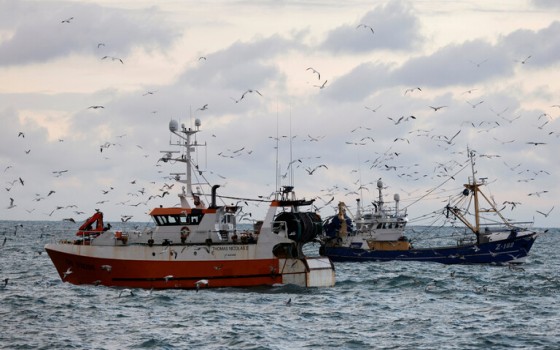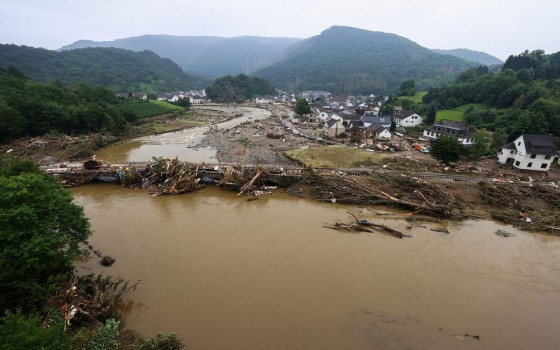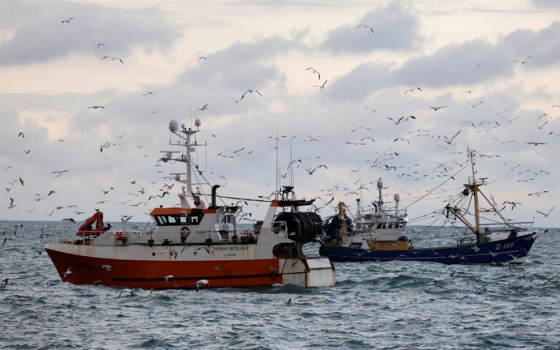
Brussels announces a European agreement to reduce methane emissions in the energy sector

- Europe and Arabs
- Tuesday , 20 December 2022 15:41 PM GMT
Brussels: Europe and the Arabs
The Council of the European Union representing member states has reached agreement (General Approach) on a proposal to track and reduce methane emissions in the energy sector. The text is the first of its kind and a critical contribution to climate action, as methane is the second most important greenhouse gas after carbon dioxide.
“Methane is a powerful greenhouse gas, responsible for about 30% of current global warming. This regulation will help us understand the source of our methane emissions and address them effectively. This will help us fulfill our commitments under the Global Methane Pledge to reduce methane emissions by 30% by 2030.” According to what was reported, a European statement was distributed in Brussels on behalf of the representative of the rotating presidency of the Union, Joseph Skila, the Czech Minister of Industry and Trade
The proposal introduces new requirements for the oil, gas and coal industries to measure, report and verify methane (MRV) emissions at the highest level. Operators will need to carefully document all wells and mines, track their emissions and take appropriate mitigation measures to prevent and reduce methane emissions in their operations.
The general approach generally states the provisions of the proposal and takes into account different types of infrastructure such as offshore platforms, underground pipelines or distribution networks. It also allows the use of different instruments used to measure emissions and offers flexibility in specific national or geological conditions.
Oil and gas sector
Operators will have to measure and plot reports of methane emissions that will be checked by independent certified auditors.
Under the new rules, operators will have to detect and repair methane leaks. Operators will need to conduct surveys of methane leaks in various types of infrastructure at fixed intervals, using devices with proposed leak detection minima.
Operators will then need to repair or replace all leaking components above certain levels immediately upon detection, and no later than five days for the first attempt and 30 days for a full repair. Operators should prioritize repairing large leaks. Offshore oil and gas wells deeper than 700 meters will be exempted, as emissions from those depths have limited potential to reach the atmosphere and insufficient methodology to properly measure emissions from such wells.
The general approach increases detection limits and repair thresholds, in order to more efficiently treat large volumes of leaks rather than a greater number of small leaks that account for smaller emissions shares.
Venting and flaring practices, which release methane into the atmosphere, will be prohibited, except in strictly defined exceptional circumstances, such as construction, repair, decommissioning and safety or component testing. The ban applies immediately upon entry into force of the regulation. In the event that it cannot be enforced due to other requirements such as the licensing process or when the unavailability of equipment causes an exceptional delay, the implementation of the ban may be delayed for a maximum of two years.
Methane is also emitted from inactive wells. Member States will create and publish an inventory of all registered inactive wells, temporarily blocked wells and permanently blocked and abandoned wells. The general approach foresees a more phased approach for Member States with a very large number of wells (40,000 or more). Member States will develop mitigation plans for the repair, reclamation and permanent capping of inactive wells and temporarily blocked wells. An exception can be made for offshore wells located at water depths between 200 and 700 meters in specific circumstances.
coal sector
In the coal sector, member states will have to measure and report methane emissions from underground mines and from surface mines on an ongoing basis. They would have to take a general inventory of mines that have been closed and abandoned for 50 years and measure their emissions.
Flaring will be banned from 1 January 2025 and venting will be prohibited in coal mines emitting more than 5 tonnes of methane per kiloton of coal mined, from 1 January 2027, and in mines emitting more than 3 tonnes of methane per kiloton of coal mined Retrieved January 1, 2031.
Venting and flaring from closed and abandoned mines will be prohibited from January 1, 2030.
methane emissions outside the European Union
Methane emissions from EU energy imports will also be tracked. The new rules will introduce global monitoring tools that will increase the transparency of methane emissions from oil, gas and coal imports into the EU, allowing the Commission to consider further action in the future. The creation of two performance tools will demonstrate and reduce the efforts of countries and energy companies around the world in reducing methane emissions.
The Council will now enter into negotiations with Parliament to reach agreement on a final text.
The Commission submitted a proposal for regulation on reducing methane emissions in the energy sector on December 15, 2021, as a second part of the “fit 55” legislative proposals aimed at implementing the European Green Deal with the aim of achieving climate neutrality in the Union by 2050. The proposal comes from the strategic vision laid out It will be part of the EU's methane strategy in 2020. At the UN climate conference COP26 in 2021, the EU launched the Global Pledge on Methane in partnership with the US, with more than 100 countries committing to reducing methane emissions. by 30% by 2030 compared to 2020 levels.












No Comments Found